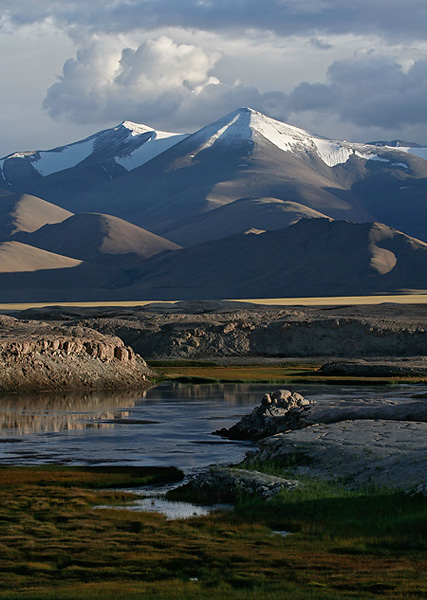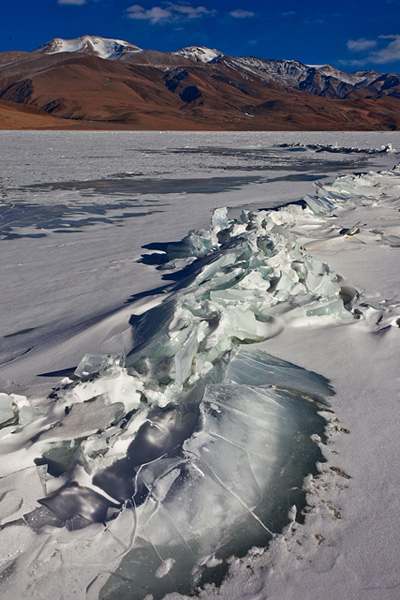I am often told that when you desire something strongly, the entire universe conspires to give it you. I do not know if the universe does so, but a group of unknown travelers certainly took care of something that was bothering me.
Despite having planned two months in Ladakh, we still could not fit Tso Kar anywhere in our itinerary. We had given up on it and consoled ourselves with a ‘there is always a next time.’ After spending four days in Tso Moriri and witnessing the celebrations at Korzok Gustor Festival, we were searching for transport back to Leh. We had hired a one-way transport to Tso Moriri and had left the return journey to chance. Now we were asking everyone in the village if there is a vehicle leaving for Leh tomorrow with two seats to spare.

Tso Moriri is a place far away from everywhere else. Not everyday can you expect to find a vehicle heading out of the village. The one bus that connects the lake with Leh operates once in every ten days, and that tenth day was still far away. Our hope was in connecting with tourists returning to Leh, who may have some additional space available in their cab. We inquired everyone whom we bumped into and left a message at the restaurant where we always ate. That’s how we stumbled into a group of four Israeli travellers who were planning to leave the next day. The good thing: they wanted to take the longer route to Leh and spend a night at Tso Kar on the way. We could not ask for more.
—
Journal entry on the brief visit to Tso Kar.
The road to Polo Kongka pass is a smooth ascent. It almost feels like driving on a plateaued land. Unlike the dry lands of Ladakh that we are so used to until now, there is a lot of grass and greenery all along the way. We occasionally stumble upon road workers and tents of changspa nomads. A steady descent from the pass takes us to Tso Kar lake in the middle of a wide, flat terrain.
Tso Kar is not an expanse of blue waters like Tso Moriri and Pangong. It is more of a marsh in a wide valley with deep waters here and there. It is miles wide and so long that I can’t see the other end. After being used to the constantly undulating terrain in Ladakh for a month, seeing such a vast flatland comes as a surprise.
The grass around Tso Kar is tall and grows densely at places. There is plenty of bird life along the lake. We see kiangs, the Tibetan Wild Asses, getting on their feet and sprinting away at the first sight of us. Tall snowy peaks dominate the western bank while the peaks to the south are smaller and have an reddish-brown hue.
Tujhkse, a small village on the bank of the lake, appears devoid of people but for a couple who run a parachute-tent restaurant. They show us to one of the several houses with signs that read ‘home stay.’
We left early next morning, driving through Morey Plains and Tanglang La. In our earlier journey on this road when we were arriving from Manali to Leh, it was already dark when we crossed Tangland La. This time we get to see the landscapes that we had missed earlier: another wish fulfilled by the conspiring universe. The mountains here are rocky and unlike the loose soil on the slopes in most parts of Ladakh. The rocks are dark and have unusual hues varying from maroon to chocolate brown. There are queer formations all over the mountains – super sharp and jagged ridges; peaks shaped with sharp upward projections like tridents put next to each other. They are often so steep that they project like walls of rock on either side of the road.
We made the downhill journey after Tanglang la quickly and were back in Leh before noon.
Prints of all the images available. Request for prints.

